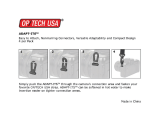
RCC
3
Table of contents
Foreword...............................................................................................................................................................7
Conventions .....................................................................................................................................................7
Product recycling............................................................................................................................................7
Studer Innotec contact details .....................................................................................................................8
Your reseller’ contact details.........................................................................................................................8
Warnings and caution........................................................................................................................................8
Warnings and caution........................................................................................................................................9
Warranty ...........................................................................................................................................................9
Limitation of responsability.............................................................................................................................9
Safety instructions............................................................................................................................................9
Acceptance of the software licence and updates..................................................................................9
Introduction........................................................................................................................................................11
Models concerned........................................................................................................................................11
Controls and indicators ................................................................................................................................11
SD card............................................................................................................................................................11
Connection........................................................................................................................................................12
Series connection..........................................................................................................................................12
Dimensions..........................................................................................................................................................13
RCC-02............................................................................................................................................................13
RCC-03............................................................................................................................................................13
Quick Start Guide..............................................................................................................................................14
Adjustment of the language.......................................................................................................................14
Adaptation to the source ............................................................................................................................14
Adaptation to the batterie..........................................................................................................................15
Activation of the function Smart-Boost......................................................................................................16
Basic displays .....................................................................................................................................................17
Activating and deactivating the combi Xtender........................................................................................18
Adjustment of the RCC remote control.........................................................................................................19
Adjustment of the language {5000} ...........................................................................................................19
Adjustment of date {5002) and time {5001}..............................................................................................19
Adjustment of the contrast {5006} ..............................................................................................................19
Adjustment of the back-lighting {5007} .....................................................................................................19
Back-lighting always off {5008}................................................................................................................19
Duration of the back-lighting {5009}.......................................................................................................20
Red back-lighting if the Xtender is OFF and if there is a fault {5026}.................................................20
Inactivity period before returning to the standard display {5010}.........................................................20
Duration of display for quick messages {5011} .........................................................................................20
Acoustic alarm {5027}...................................................................................................................................20
User level {5012}.............................................................................................................................................20
Drive the remote control to the user level basic {5019}..........................................................................20
Backup and restoring {5013}........................................................................................................................20
Backup of statistics {5014} ........................................................................................................................20
Backup of remote control configurations {5015}..................................................................................21
Backup of Xtender configurations {5017}..............................................................................................21
Loading the remote control configurations {5016} ..............................................................................21
Loading the Xtender configurations {5018}...........................................................................................21
Loading a master file {5034}.....................................................................................................................21
Separator of the csv files {5032}...............................................................................................................21
Information on the operating mode of the installation..............................................................................22
Display of the parallel and three-phase systems .....................................................................................23
Event history .......................................................................................................................................................24
Alarm Low battery voltage..........................................................................................................................24
Stop Battery voltage too low.......................................................................................................................24
Stop High battery voltage............................................................................................................................24
Message AC IN synchronisation in progress..............................................................................................24
Error Incorrect input frequency...................................................................................................................25
Error Input voltage too high.........................................................................................................................25
Error Input voltage too low...........................................................................................................................25
























